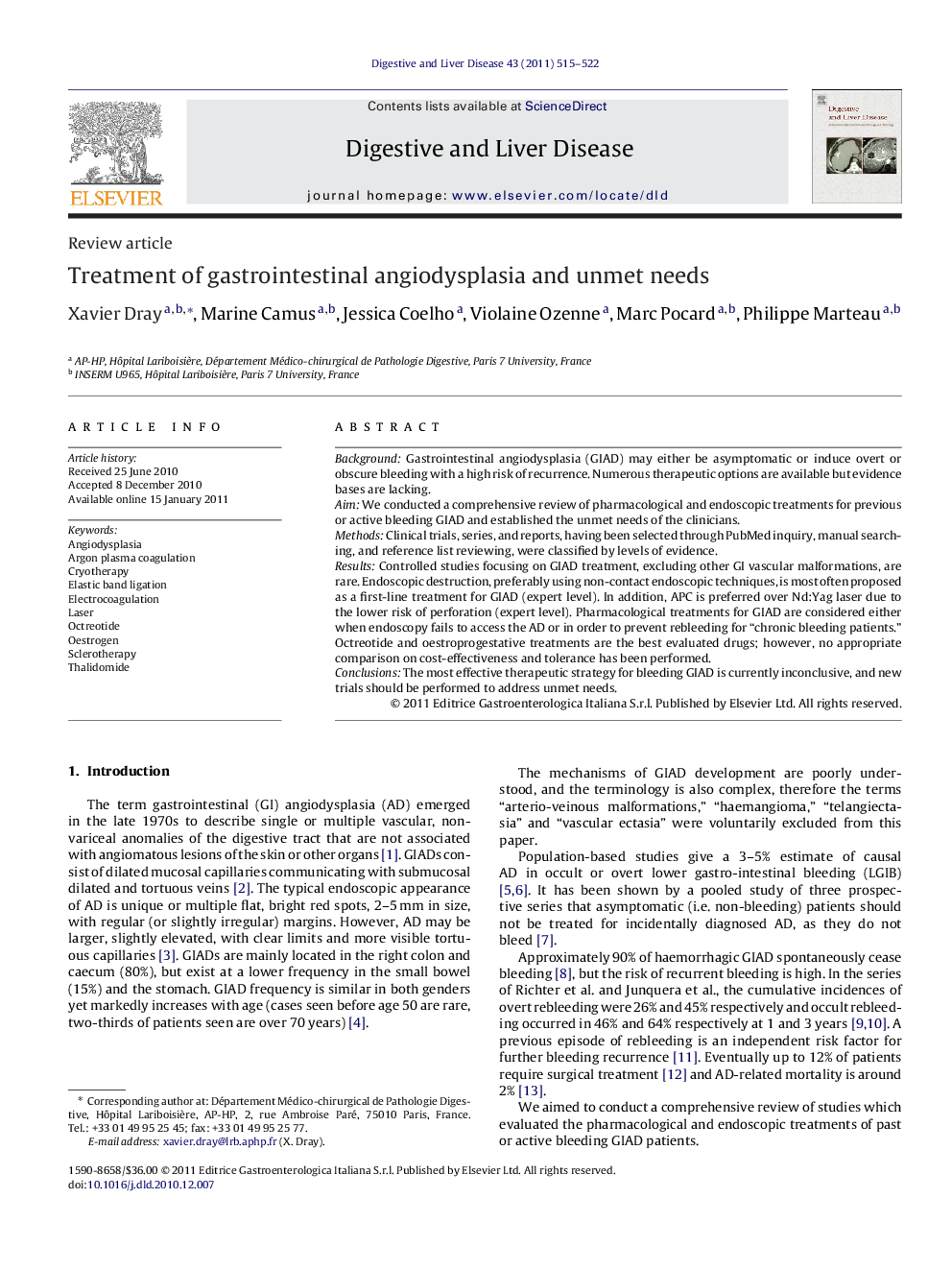| Article ID | Journal | Published Year | Pages | File Type |
|---|---|---|---|---|
| 3262989 | Digestive and Liver Disease | 2011 | 8 Pages |
BackgroundGastrointestinal angiodysplasia (GIAD) may either be asymptomatic or induce overt or obscure bleeding with a high risk of recurrence. Numerous therapeutic options are available but evidence bases are lacking.AimWe conducted a comprehensive review of pharmacological and endoscopic treatments for previous or active bleeding GIAD and established the unmet needs of the clinicians.MethodsClinical trials, series, and reports, having been selected through PubMed inquiry, manual searching, and reference list reviewing, were classified by levels of evidence.ResultsControlled studies focusing on GIAD treatment, excluding other GI vascular malformations, are rare. Endoscopic destruction, preferably using non-contact endoscopic techniques, is most often proposed as a first-line treatment for GIAD (expert level). In addition, APC is preferred over Nd:Yag laser due to the lower risk of perforation (expert level). Pharmacological treatments for GIAD are considered either when endoscopy fails to access the AD or in order to prevent rebleeding for “chronic bleeding patients.” Octreotide and oestroprogestative treatments are the best evaluated drugs; however, no appropriate comparison on cost-effectiveness and tolerance has been performed.ConclusionsThe most effective therapeutic strategy for bleeding GIAD is currently inconclusive, and new trials should be performed to address unmet needs.
